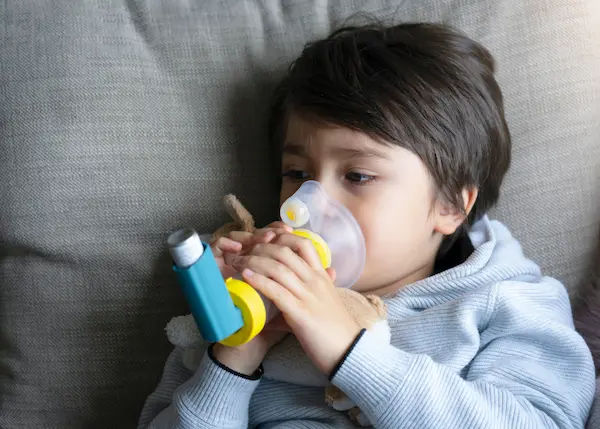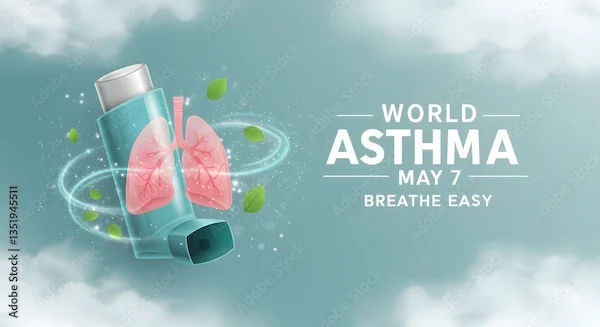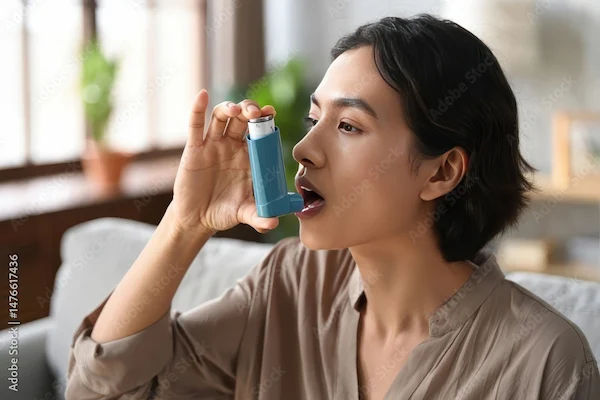Asthma Attack and Anaphylaxis Differences
Learn the differences between an asthma attack and anaphylaxis, including their causes, symptoms, and emergency treatments. Understand how to recognize and respond to each condition promptly.

Written by
Last updated on 25th Aug, 2025
.webp?tr=q-80,f-webp,w-350,dpr-2,c-at_max 700w)
If you or a loved one has ever experienced sudden breathing difficulties, you may wonder whether it’s an asthma attack or anaphylaxis. While both conditions can cause severe respiratory distress, they are different in their causes, symptoms, and treatments. Knowing the difference can help you respond appropriately in an emergency.
Let’s break it down in simple terms.
What is an Asthma Attack?
An asthma attack occurs when the airways (bronchial tubes) become inflamed and narrow, making it difficult to breathe. This happens due to triggers like allergens, pollution, cold air, exercise, or infections.
Symptoms of an Asthma Attack:
- Wheezing (a whistling sound while breathing)
- Shortness of breath
- Tightness in the chest
- Persistent coughing (especially at night or early morning)
- Difficulty speaking in full sentences
What Causes an Asthma Attack?
Asthma is a chronic condition where the airways overreact to certain triggers, leading to:
- Swelling of the airway lining
- Increased mucus production
- Muscle tightening around the airways
Consult a Top Pulmonologist
How to Manage an Asthma Attack:
Below are the ways to manage asthma attack,
1. Use a Rescue Inhaler – A quick-relief bronchodilator (like albuterol) helps open the airways.
2. Stay Calm – Panic can worsen breathing difficulties.
3. Sit Upright – Helps ease breathing.
4. Seek Emergency Help – If symptoms don’t improve after using an inhaler or if lips/fingernails turn blue, call for medical assistance immediately.
Prevention Tips:
- Avoid known triggers (dust, smoke, pet dander).
- Take prescribed controller medications (steroid inhalers).
- Get regular check-ups with a doctor.
What is Anaphylaxis?
Anaphylaxis is a severe, life-threatening allergic reaction that affects the whole body. Unlike asthma, which primarily involves the lungs, anaphylaxis impacts multiple systems, including the skin, heart, and blood pressure.
Symptoms of Anaphylaxis:
- Skin Reactions – Hives, itching, flushed or pale skin
- Swelling – Face, lips, tongue, or throat (can block airways)
- Breathing Trouble – Similar to asthma but often with throat swelling
- Rapid Pulse & Low Blood Pressure – Feeling dizzy or faint
- Gastrointestinal Issues – Nausea, vomiting, diarrhea
What Causes Anaphylaxis?
Common triggers include:
- Food Allergies (peanuts, shellfish, eggs, milk)
- Insect Stings (bees, wasps)
- Medications (penicillin, NSAIDs)
- Latex or Exercise-Induced Reactions
How to Manage Anaphylaxis:
1. Use an Epinephrine Auto-Injector (EpiPen) – This is the first and most critical step.
2. Call Emergency Services – Even if symptoms improve after epinephrine, follow-up care is needed.
3. Lie Down with Legs Elevated – Helps maintain blood pressure.
4. Avoid Sitting Up Suddenly – Can worsen shock.
Prevention Tips:
- Always carry an EpiPen if you have known severe allergies.
- Read food labels carefully.
- Wear a medical alert bracelet.
Key Differences Between Asthma and Anaphylaxis
Below are the key differences between asthma and anaphylaxis,
| Feature | Asthma Attack | Anaphylaxis |
|---------|--------------|-------------|
| Primary Issue | Narrowed airways due to inflammation | Whole-body allergic reaction |
| Main Symptoms | Wheezing, coughing, chest tightness | Hives, swelling, low blood pressure |
| Onset | Gradual or sudden | Usually sudden (within minutes) |
| Triggers | Allergens, smoke, exercise | Food, insect stings, medications |
| Treatment | Rescue inhaler (bronchodilator) | Epinephrine (EpiPen) |
| Emergency Need | If inhaler doesn’t help | Always requires emergency care |
When to Seek Immediate Help
Seek immediate help in the event of,
- Asthma Emergency: If the inhaler isn’t working, breathing becomes extremely difficult, or lips turn blue.
- Anaphylaxis Emergency: If there’s throat swelling, difficulty breathing, or signs of shock (pale skin, weak pulse).
Final Tips for Staying Safe
Asthma Patients: Keep your inhaler handy, avoid triggers, and follow your doctor’s plan.
Anaphylaxis-Prone Individuals: Always carry an EpiPen, inform friends/family about your allergy, and seek emergency help immediately after using epinephrine.
If you experience frequent asthma symptoms or suspect allergies, consult a doctor for proper diagnosis and management. You can book a consultation or allergy test through Apollo 24|7 for expert care.
Final Thoughts
While asthma attacks and anaphylaxis may share some respiratory symptoms, they are distinct medical emergencies with different triggers, mechanisms, and treatments. Recognizing the differences is crucial for timely and appropriate intervention.
Consult a Top Pulmonologist
Consult a Top Pulmonologist
Dr. Naseeha Mohammed S V
Pulmonology Respiratory Medicine Specialist
6 Years • MBBS, MD ,DNB Respiratory Medicine
Bengaluru
Apollo Clinic, Sarjapur Road, Bengaluru
Dr. Bhargavi Koppolu
Pulmonology Respiratory Medicine Specialist
6 Years • MBBS, MD (Pulmonology )
Visakhapatnam
Apollo Hospitals Ramnagar Vizag, Visakhapatnam

Dr Abhishek Verma
Pulmonology Respiratory Medicine Specialist
5 Years • MD (Respiratory Medicine), PDCC (Interventional Pulmonology) Alumni SGPGIMS & KGMU Lucknow
Lucknow
Apollomedics Super Speciality Hospital, Lucknow
(50+ Patients)

Dr. Krishna Ramanathan
Ent Specialist
10 Years • MBBS DNB
Bengaluru
Apollo Clinic, JP nagar, Bengaluru

Dr Chetan Kumar
Pulmonology Respiratory Medicine Specialist
27 Years • MBBS, MD TB & CHEST DISEASE
Delhi
Cronus Hospital, Delhi




